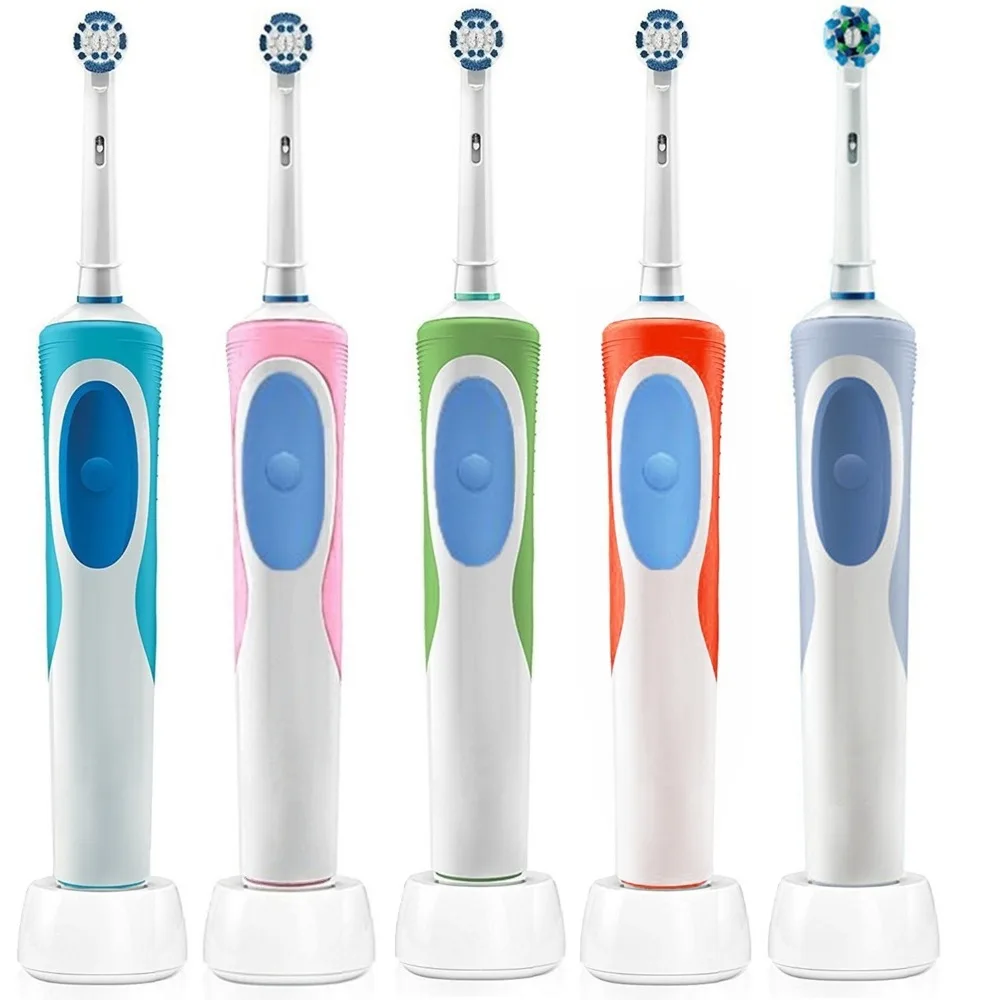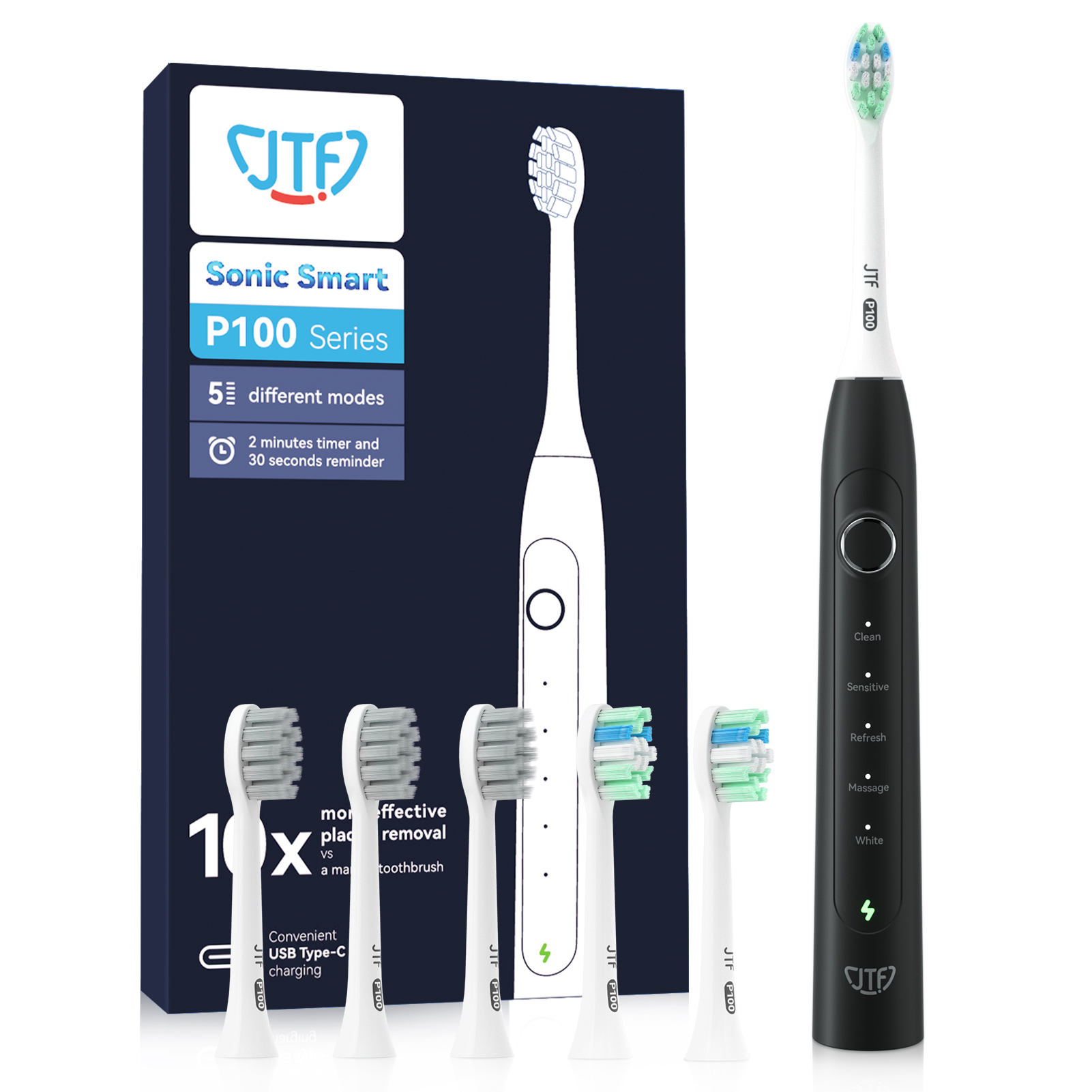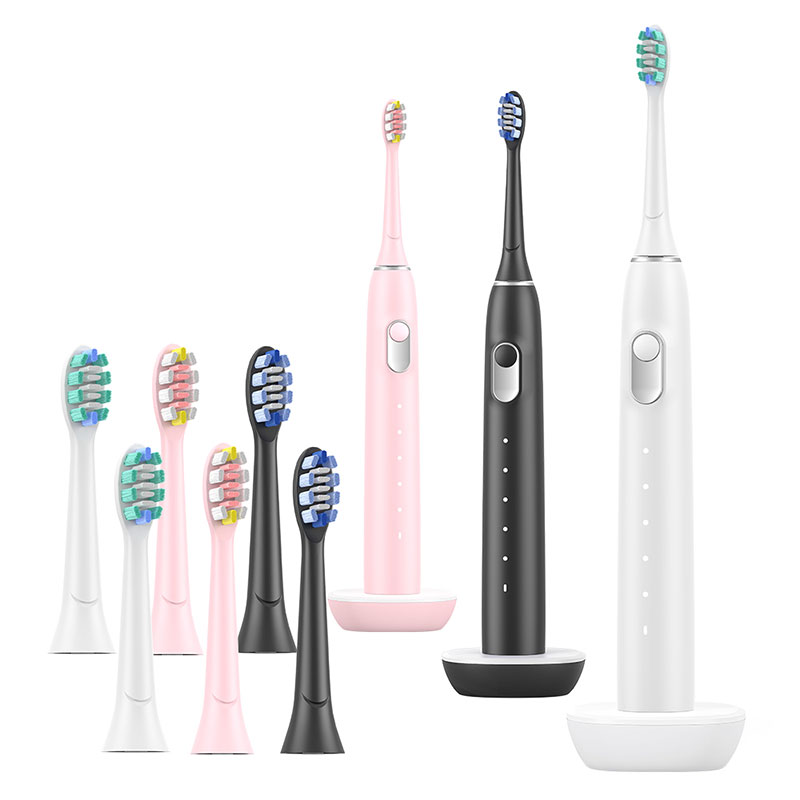Understanding the Basics: Sonic vs Electric Toothbrush
When it comes to maintaining optimal oral hygiene, the tools we use play a significant role. Among the most popular choices are sonic and electric toothbrushes. The debate between sonic vs electric toothbrush has been ongoing, with experts and consumers alike weighing in on the benefits and drawbacks of each type. Understanding the fundamental differences between these two can help you make an informed decision about which toothbrush best suits your dental care needs.
What Are Electric Toothbrushes?
Electric toothbrushes have been a staple in dental care for decades. Unlike manual toothbrushes, electric models use batteries or rechargeable power sources to move the brush head, providing more consistent and vigorous cleaning action.
Types of Electric Toothbrushes
Electric toothbrushes come in several varieties, each offering unique features:
- Rotary Electric Toothbrushes: These have a brush head that spins in a circular motion, effectively removing plaque and debris.
- Oscillating-Burst Toothbrushes: These combine oscillating movements with pulsing bursts to enhance cleaning efficiency.
- Ultrasonic Electric Toothbrushes: Utilizing high-frequency vibrations, these toothbrushes aim to disrupt plaque and bacteria on a microscopic level.
Key Features and Benefits
Electric toothbrushes offer several advantages over manual brushing:
- Consistent Brushing: The built-in timers and automated movements ensure that users brush for the recommended two minutes without missing any sections of the mouth.
- Ease of Use: For individuals with limited mobility or dexterity issues, electric toothbrushes can provide an easier and more effective brushing experience.
- Effective Plaque Removal: Studies have shown that electric toothbrushes can remove more plaque and reduce gingivitis compared to manual brushing.
What Are Sonic Toothbrushes?
Sonic toothbrushes are a specific category within the broader electric toothbrush market. They operate at higher frequencies, typically around 30,000 to 40,000 brush strokes per minute, which distinguishes them from other electric toothbrush types.
How Sonic Technology Works
Sonic toothbrushes use rapid vibrations to create a sweeping fluid motion that extends beyond the brushing surface. This technology not only cleans the teeth but also helps in disrupting plaque and bacteria in hard-to-reach areas.
Advantages of Sonic Toothbrushes
The unique mechanics of sonic toothbrushes offer distinct benefits:
- Enhanced Cleaning Action: The high-speed vibrations produce fluid dynamics that clean areas between teeth and along the gumline more effectively.
- Whitening Effects: The vigorous action can help in removing surface stains, contributing to a brighter smile.
- Gentle on Gums: Despite their power, sonic toothbrushes can be gentle on the gums, reducing the risk of irritation and recession when used correctly.
Comparing Cleaning Efficiency
One of the primary considerations in the debate between sonic vs electric toothbrush is their cleaning efficiency.
Plaque Removal
Both sonic and other electric toothbrushes are more effective at plaque removal compared to manual toothbrushes. However, sonic toothbrushes, with their higher frequency of brush strokes, tend to remove plaque more efficiently, especially in areas that are difficult to reach with manual brushing.
Gum Health
Maintaining healthy gums is crucial for overall oral health. Sonic toothbrushes offer superior gum stimulation due to their rapid vibrations, which can improve blood circulation and reduce the risk of gingivitis. While electric toothbrushes also support gum health, sonic models often provide a slight edge in this area.
Whitening Capabilities
For individuals concerned with teeth whitening, sonic toothbrushes are often recommended. The high-speed vibrations not only remove plaque but also help in dislodging surface stains more effectively than standard electric toothbrushes.
Design and User Experience
The design and user experience of a toothbrush can significantly impact its effectiveness and comfort during use.
Brush Head Design
Sonic toothbrushes typically feature slim, flexible brush heads that can adapt to the contours of the mouth, ensuring thorough cleaning. Electric toothbrushes come in various brush head designs, including oscillating and rotating heads, each catering to different user preferences.
Comfort and Ergonomics
Sonic toothbrushes are often praised for their lightweight and ergonomic designs, making them comfortable to hold and use for extended periods. Electric toothbrushes also offer comfortable grips and balanced weight distributions, but the high-speed vibrations of sonic models can sometimes take getting used to.
Noise Levels
One consideration when choosing between sonic and electric toothbrushes is noise. Sonic toothbrushes tend to operate at a higher pitch due to their rapid vibrations, which some users might find unsettling. Electric toothbrushes, depending on the model, can be quieter but still louder than manual toothbrushes.
Battery Life and Maintenance
Battery life and ease of maintenance are practical factors to consider when selecting a toothbrush.
Charging and Battery Life
Sonic toothbrushes generally require regular charging due to their high-frequency operation. Most models offer a full charge lasting between one to two weeks with regular use. Electric toothbrushes, particularly those with lower vibration frequencies, may have longer battery life, extending up to several weeks on a single charge.
Brush Head Replacement
Replacing brush heads is essential for maintaining cleaning efficiency and hygiene. Sonic toothbrushes often have accessible and easily replaceable heads, but they can be slightly more expensive than standard electric toothbrush heads. Electric toothbrushes offer a wide range of brush head options, catering to various dental needs and preferences.
Durability and Build Quality
Both sonic and electric toothbrushes are built to withstand regular use. However, the higher speeds in sonic models can lead to faster wear and tear on the brush head and motor over time. Selecting a reputable brand and following maintenance guidelines can prolong the lifespan of either type.
Cost Considerations
Budget is another critical factor when deciding between sonic vs electric toothbrush options.
Initial Cost
Sonic toothbrushes often come with a higher initial price tag compared to standard electric toothbrushes. The advanced technology and higher frequency of operation contribute to the increased cost.
Long-Term Expenses
Long-term costs include brush head replacements and potential maintenance or repairs. Sonic toothbrushes may incur higher long-term expenses due to the need for more frequent replacement of specialized brush heads. Electric toothbrushes, depending on the model, may offer more affordable replacement options and longer-lasting components.
Value for Money
When evaluating cost, it’s essential to consider the benefits each type offers. Sonic toothbrushes, while more expensive, provide superior cleaning efficiency and potentially better oral health outcomes. Electric toothbrushes offer a balance of effectiveness and affordability, making them a practical choice for many users.
User Preferences and Recommendations
Personal preferences and individual dental needs play a significant role in choosing between sonic vs electric toothbrush.
Sensitivity and Comfort
Individuals with sensitive teeth or gums may prefer sonic toothbrushes for their gentle yet effective cleaning action. The high-frequency vibrations can provide a thorough clean without excessive force, reducing the risk of irritation.
Brushing Habits
Users who struggle with maintaining consistent brushing techniques may benefit from the automated movement of electric and sonic toothbrushes. Sonic toothbrushes, with their built-in timers and consistent speed, can help establish better brushing habits.
Dental Conditions
People with specific dental conditions, such as braces, implants, or periodontal disease, may find sonic toothbrushes more effective due to their ability to reach tricky areas and provide a deeper clean. However, electric toothbrushes with specialized modes can also cater to these needs effectively.
Scientific Studies and Expert Opinions
Numerous scientific studies and dental professional opinions support the effectiveness of both sonic and electric toothbrushes, each with its unique advantages.
Research on Cleaning Efficiency
Studies have consistently shown that both sonic and electric toothbrushes outperform manual brushing in plaque removal and gingivitis reduction. Comparative studies indicate that sonic toothbrushes often achieve slightly better results due to their higher frequency and fluid dynamics.
Expert Recommendations
Dental professionals generally endorse the use of electric and sonic toothbrushes, particularly for individuals who may struggle with manual brushing techniques. Experts often recommend sonic toothbrushes for patients seeking enhanced whitening and deeper cleaning capabilities.
Long-Term Oral Health Benefits
Long-term use of either sonic or electric toothbrushes contributes to better oral health outcomes, including reduced cavities, healthier gums, and decreased incidence of periodontal disease. The choice between the two ultimately depends on personal preferences and specific dental needs.
Environmental Impact and Sustainability
In today’s environmentally conscious world, the sustainability of dental care products is becoming increasingly important.
Energy Consumption
Sonic toothbrushes, with their higher operating frequencies, may consume more energy compared to standard electric toothbrushes. However, many models are designed with energy-efficient batteries and chargers to minimize environmental impact.
Material Use and Recycling
Both sonic and electric toothbrushes are typically made from a combination of plastic and electronic components, which can pose recycling challenges. Some brands offer recycling programs or use recyclable materials to reduce environmental footprints.
Longevity and Replacement
Opting for a durable toothbrush that requires fewer replacements can help mitigate environmental concerns. Sonic toothbrushes, while efficient, may require more frequent brush head changes, potentially increasing waste. Electric toothbrushes with interchangeable heads may offer a more sustainable option by reducing the need to replace the entire unit.
Future Trends in Toothbrush Technology
The ongoing evolution of dental technology continues to shape the future of oral care tools.
Smart Toothbrush Features
Advancements in smart technology are being integrated into both sonic and electric toothbrushes. Features such as Bluetooth connectivity, mobile app integration, and real-time brushing feedback are becoming increasingly common, enhancing user experience and encouraging better oral hygiene practices.
Personalization and Customization
Future toothbrush models are likely to offer more personalized and customizable options, allowing users to tailor their brushing experience to their specific needs. This includes adjustable vibration settings, interchangeable brush heads, and personalized brushing programs.
Sustainable Innovations
As environmental concerns grow, manufacturers are focusing on developing more sustainable toothbrush options. This includes biodegradable materials, energy-efficient designs, and recyclable components to reduce the overall environmental impact of toothbrush production and disposal.
Making the Right Choice: Sonic vs Electric Toothbrush
Choosing between a sonic and electric toothbrush ultimately depends on your individual needs, preferences, and budget. Both types offer significant advantages over manual brushing, with sonic toothbrushes providing enhanced cleaning through high-frequency vibrations and electric toothbrushes offering reliable and effective plaque removal with various movement patterns.
Assessing Your Needs
Consider your specific oral health requirements, such as sensitivity, gum health, and whitening goals. If you seek a toothbrush that offers superior cleaning in hard-to-reach areas and gentle gum care, a sonic toothbrush may be the ideal choice. On the other hand, if you prefer a more straightforward electric toothbrush with reliable performance and a potentially lower cost, an electric toothbrush could be the better option.
Trying Before Committing
If possible, try using both types to determine which one feels more comfortable and suits your brushing style. Many dental clinics and stores offer trial periods or exhibits that allow users to experience the differences firsthand.
Consulting with a Dentist
Consulting with your dentist can provide personalized recommendations based on your oral health status. A dental professional can assess your needs and suggest the most suitable toothbrush type to support your dental care routine effectively.
In the ongoing consideration of sonic vs electric toothbrush options, it’s clear that both types offer substantial benefits for oral hygiene. Sonic toothbrushes, with their high-frequency vibrations and advanced cleaning capabilities, provide an exceptional brushing experience that can lead to superior plaque removal and gum health. Electric toothbrushes, meanwhile, offer versatility, ease of use, and effective cleaning performance that caters to a wide range of dental needs and budgets.
Ultimately, the best choice depends on your personal preferences, dental health requirements, and financial considerations. By understanding the key differences and benefits of each type, you can make an informed decision that aligns with your oral care goals. Whether you opt for the cutting-edge technology of a sonic toothbrush or the dependable performance of a traditional electric model, investing in either will significantly enhance your dental hygiene routine and contribute to a healthier, brighter smile.


